Recent Posts
Burbank Residents: We Specialize in Flood Cleanup and Restoration!
10/10/2024 (Permalink)
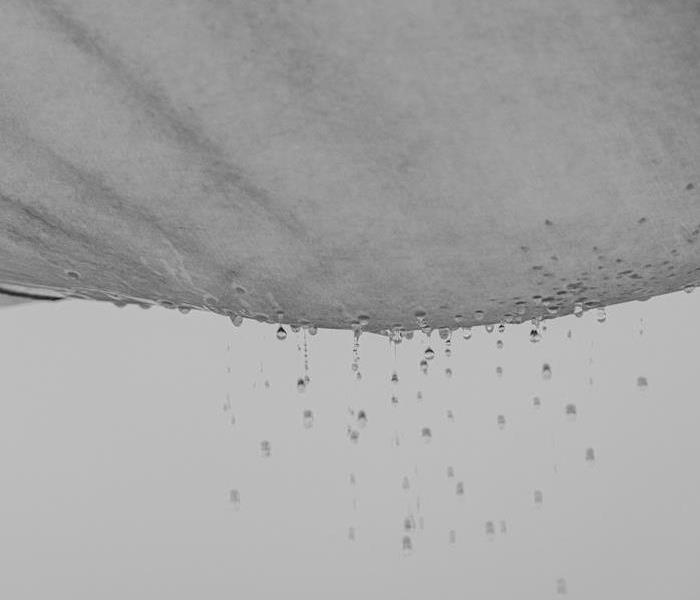 This Burbank home flooded due to heavy rains.
This Burbank home flooded due to heavy rains.
A flood at any time, although flooding most often occurs during heavy rainfall. Basements are inherently prone to flooding because they are the lowest level of a building and are normally built partly or entirely below ground level. There are a number of reasons why your Burbank basement could flood, including:
- A blocked or failed sewer lateral pipe
- Heavy rain causes surface water to pool around your home
- Storm sewer backup
- Sanitary sewer backup
- Foundation drainage failure
- Water supply-line break or hot-water tank failure
- And many more
Have Questions about Flooding?
Call Today - (818) 842 - 1400
If flood water is not handled quickly and properly, it can jeopardize your health and safety, and cause severe damage to your home’s structure. Remember, the longer you wait, the worse the problem will get.
The bottom line: a flooded basement can jeopardize your health, safety, and your home’s integrity. It’s worth making a call to SERVPRO of Burbank and letting our trained, professional crews handle the situation safely and correctly. We have earned the trust of hundreds of homeowners, business owners, and property professionals.
We are Flooded Basement Specialists:
- We are Available 24 hours/7 days per week
- We’re a Preferred Vendor to many National Insurance Companies
- We Bill The Insurance Directly – One Less Thing For You To Worry About
- Our Technicians are Highly Trained in Water Restoration Techniques
- We use s500 IICRC Restoration Standards
- Advanced Inspection and Extraction Equipment
Basement Flooded? Call Us Today – We’re Ready 24/7 To Help (818) 842 - 1400
Burbank Water Damage Emergency Tips Dos and Don'ts
10/10/2024 (Permalink)
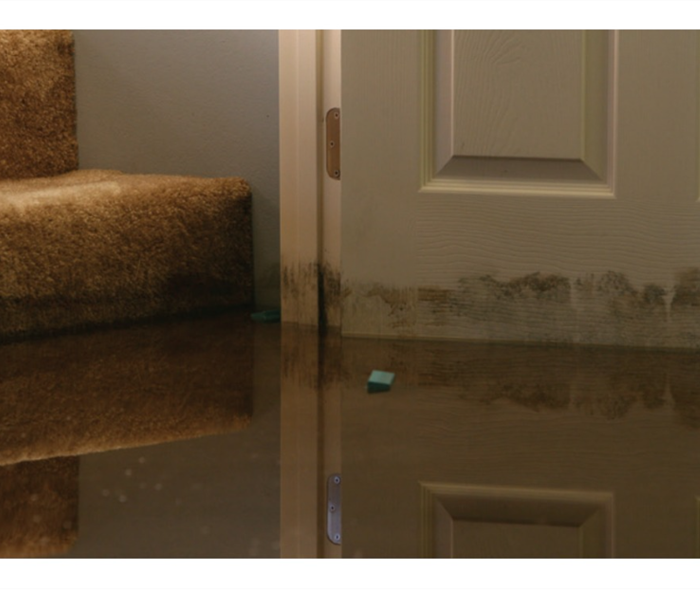 SERVPRO of Burbank provides 24 hour fire and water damage restoration service in Burbank
SERVPRO of Burbank provides 24 hour fire and water damage restoration service in Burbank
If water damage is not handled quickly and properly, it can jeopardize your health and safety, and cause severe damage to your home’s structure. Remember, the longer you wait, the worse the problem will get. So, What do you do or don't?
WATER DAMAGE FROM CLEAN WATER
Do:
- Shut off the source of water if possible or contact a qualified party to stop the water source.
- Turn off circuit breakers for wet areas of the building, when access to the power distribution panel is safe from electrical shock.
- Remove as much excess water as possible by mopping and blotting.
- Wipe excess water from wood furniture after removing lamps and tabletop items.
- Remove and prop up wet upholstery cushions for even drying.
- Place aluminum foil or wood blocks between furniture legs and wet carpeting.
- Remove to a safe, dry place any paintings, art objects, computers, documents and other materials that are valuable or sensitive to moisture.
- Use wooden clothespins to keep furniture skirting off damp floors.
- Hang draperies with coated hangers to avoid contact with wet carpeting or floors.
- Hang furs and leather goods to dry separately at room temperature.
Don't:
- Enter rooms with standing water where electrical shock hazards may exist.
- Enter affected areas if electrical outlets, switches, circuit breakers or electrical equipment are exposed to water. Always avoid electrical shock hazards.
- Leave books, newspapers, magazines or other colored items on wet carpets or floors to cause staining.
- Leave Oriental rugs or other colored rugs on wet wall-to-wall carpets to cause staining.
- Use your household vacuum cleaner to remove water, possibly causing electrical shock or damage to the vacuum cleaner.
- Use TVs or other appliances while standing on wet carpets or floors, especially not on wet concrete floors.
- Turn on ceiling fixtures if ceiling is wet or enter rooms where ceilings are sagging from retained water.
WATER DAMAGE FROM CONTAMINATED
WATER
Do:
- Avoid all contact with sewage and items contaminated by sewage.
- Wash your hands thoroughly after contact with contaminated items.
DON’T:
- Spread contaminated water by walking unnecessarily on damaged or wet areas.
- Turn on the HVAC system if there is a possibility of spreading contaminated air.
- Use household fans to dry the structure and spread contaminants.
- Use products for personal hygiene and cleanliness if exposed to the contaminated areas.
Water Damage? Call Us Today – We’re Ready 24/7 To Help (818) 842 - 1400
Burbank 24 Hour Emergency Water Damage Service
7/2/2024 (Permalink)
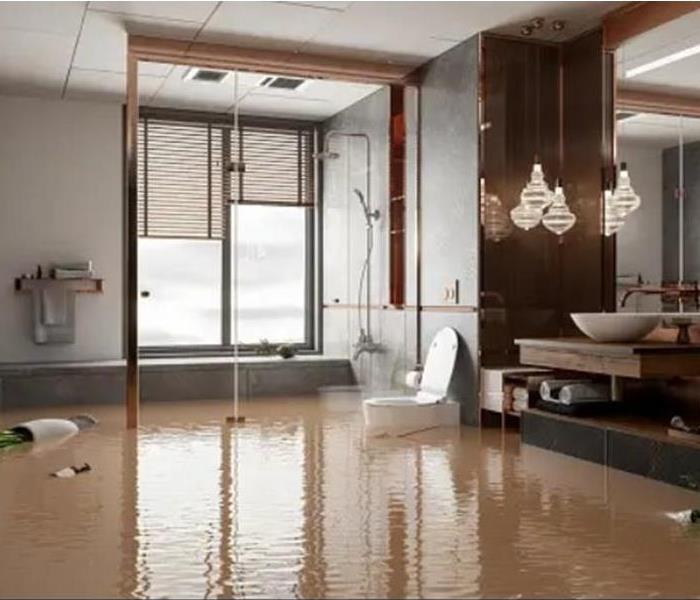 SERVPRO of Burbank provides 24 hour fire and water damage restoration service in LA County
SERVPRO of Burbank provides 24 hour fire and water damage restoration service in LA County
SERVPRO of Burbank is available 24 hours a day for water emergencies, large or small. When you are dealing with water damage, immediate action is crucial. A delay of just a few hours can greatly increase the severity of the water damage.
We Answer the Phone Ready to Help
Call Today - (818) 842 - 1400
We understand that when you call us, you may be feeling confused, stressed, and vulnerable. You need an expert to guide you through this crisis. SERVPRO of Burbank has the specific water damage training and experience to help you through this tough time. We specialize in water damage restoration—in fact, it's the cornerstone of our business.
What to Expect
When you call, we will ask several questions regarding your water damage emergency. These questions will help us determine what equipment and resources to bring, including how many trained SERVPRO professionals may be needed.
Our SERVPRO Representative will ask several questions:
- Your name and contact information
- Your insurance information (if applicable)
- The street address of the water-damaged home or business
- When did the flooding or water damage occur?
- What caused the water damage (if known)?
- Is there electricity available (on-site)?
About SERVPRO of Burbank
SERVPRO of Burbank specializes in the cleanup and restoration of residential and commercial property after a fire, smoke or water damage event. Our staff is highly trained in property damage restoration. From initial and ongoing training at SERVPRO’s corporate training facility to regular IICRC-industry certification, rest assured our staff is equipped with the knowledge to restore your property.
Faster to your Burbank Water Damage Event
7/2/2024 (Permalink)
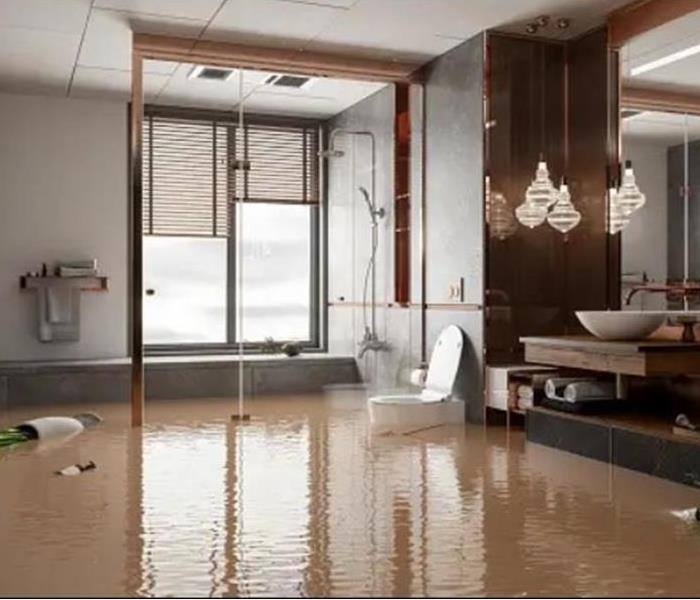 SERVPRO of Burbank provides 24 hour fire and water damage restoration service in LA County
SERVPRO of Burbank provides 24 hour fire and water damage restoration service in LA County
Flooding and water emergencies don’t wait for regular business hours and neither do we. Burbank provides emergency cleaning and restoration services 24 hours a day, 7 days a week—including all holidays.
Faster To Any Size Disaster
Flooding and water damage is very invasive. Water quickly spreads throughout your home and gets absorbed into floors, walls, furniture, and more. SERVPRO of Burbank arrives quickly and starts the water extraction process almost immediately. This immediate response helps to minimize the damage and the cleaning and restoration costs.
Need Emergency Service? Call Us 24/7 – (818)842 - 1400
Water Damage Timeline
Within Minutes
- Water quickly spreads throughout your property, saturating everything in its path.
- Water is absorbed into walls, floors, upholstery, and belongings.
- Furniture finishes may bleed, causing permanent staining on carpets.
- Photographs, books, and other paper goods start to swell and warp.
Hours 1 - 24:
- Drywall begins to swell and break down.
- Metal surfaces begin to tarnish.
- Furniture begins to swell and crack.
- Dyes and inks from cloth and paper goods spread and stain.
- A musty odor appears.
48 Hours to 1 Week:
- Mold and mildew may grow and spread.
- Doors, windows, and studs swell and warp.
- Metal begins to rust and corrode.
- Furniture warps and shows signs of mold.
- Paint begins to blister.
- Wood flooring swells and warps.
- Serious biohazard contamination is possible.
More Than 1 Week:
- Restoration time and cost increase dramatically; replacing contaminated materials and structural rebuilding may be extensive.
- Structural safety, mold growth, and biohazard contaminants pose serious risks to occupants.
About SERVPRO of Burbank
SERVPRO of Burbank specializes in the cleanup and restoration of residential and commercial property after a fire, smoke or water damage event. Our staff is highly trained in property damage restoration. From initial and ongoing training at SERVPRO’s corporate training facility to regular IICRC-industry certification, rest assured our staff is equipped with the knowledge to restore your property.
Does Your Burbank Home Have A Mold Problem?
7/2/2024 (Permalink)
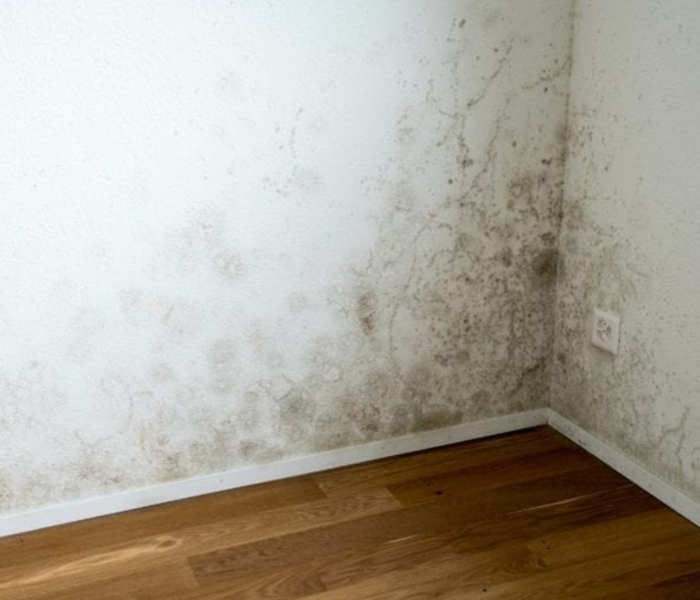 In LA County, mold can spread through a home in as little as 48 hours.
In LA County, mold can spread through a home in as little as 48 hours.
Microscopic mold spores naturally occur almost everywhere, both outdoors and indoors. This makes it impossible to remove all mold from a home or business. Therefore, mold remediation reduces the mold spore count back to its natural or baseline level. Some restoration businesses advertise “mold removal” and even guarantee to remove all mold, which is a fallacy. Consider the following mold facts:
- Mold is present almost everywhere, indoors and outdoors.
- Mold spores are microscopic and float along in the air and may enter your home through windows, doors, or AC/heating systems or even hitch a ride indoors on your clothing or a pet.
- Mold spores thrive on moisture. Mold spores can quickly grow into colonies when exposed to water. These colonies may produce health effects.
- Before mold remediation can begin, any sources of water or moisture must be addressed. Otherwise, the mold may return.
- Mold often produces a strong, musty odor and can lead you to possible mold problem areas.
- Even higher-than-normal indoor humidity can support mold growth. Keep indoor humidity below 45 percent.
If your home or business has a mold problem, we can inspect and assess your property and use our specialized training, equipment, and expertise to remediate your mold infestation.
If You See Signs of Mold, Call Us Today – (818) 842-1400
The Categories of a Water Loss
10/9/2023 (Permalink)
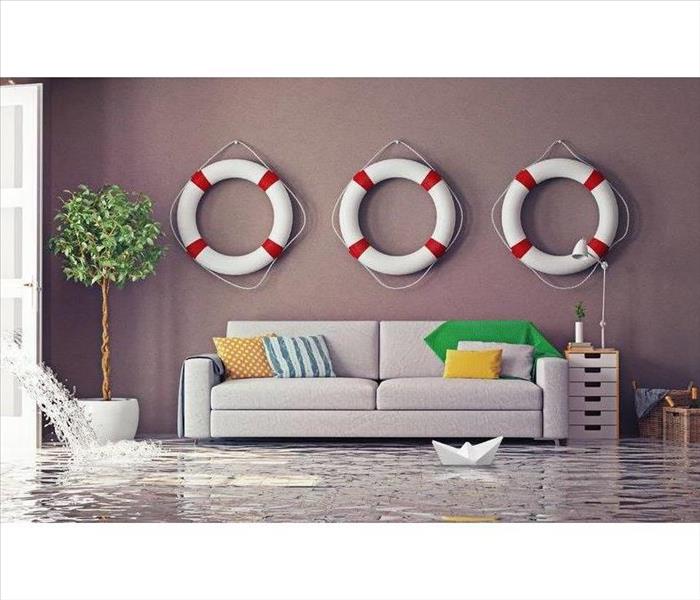 Severe Flooding
Severe Flooding
Water damage restoration training is one of the important skill sets that a team of professional cleaners need in order to offer comprehensive services. This is a service that involves going into a home or business after a wet disaster, such as flood, burst pipes, or snow destruction, and not just cleaning up the mess, but actually drying and repairing the substructures that high volumes of moisture will affect, such as plaster and drywall, wood, concrete, and metal. Mold is a concern, of course, but there can be many other problems related to moisture damage; crumbling drywall and plaster, weakening beams and supports, rusting metal surfaces, and more. If the moisture is left to sit long enough, it will eventually bring the house to ruin. By having professional water damage restoration training, a cleaning crew will be able to properly assess the situation and devise the best plan for repair.
According the IICRC (Institute of Inspection Cleaning and Restoration Certification), which sets the standards for the cleaning industry and water damage restoration training, there are several different levels and classes involved in liquid destruction. From the IICRC’s S-500 standards, there are three categories describing the type of liquid involved.
- Category 1. This is liquid from a clean and sanitary source, such as faucets, toilet tanks, drinking fountains, etc. But, category one can quickly degrade into category two.
- Category 2. This category of liquid used to be called grey water, and is described as having a level of contaminates that may cause illness or discomfort if ingested. Sources include dishwasher or washing machine overflows, flush from sink drains, and toilet overflow with some urine but not feces.
- Category 3. This is the worst classification and is grossly unsanitary. It could cause severe illness or death if ingested. It used to be called black water, and sources include sewer backup, flooding from rivers or streams, toilet overflow with feces, and stagnant liquid that has begun to support bacterial growth.
Info provided by: http://www.IICRC.org/the-basics-water-damage-restoration-training-a-23.html
Preparing your Burbank Home or Business for Fire Season
10/6/2023 (Permalink)
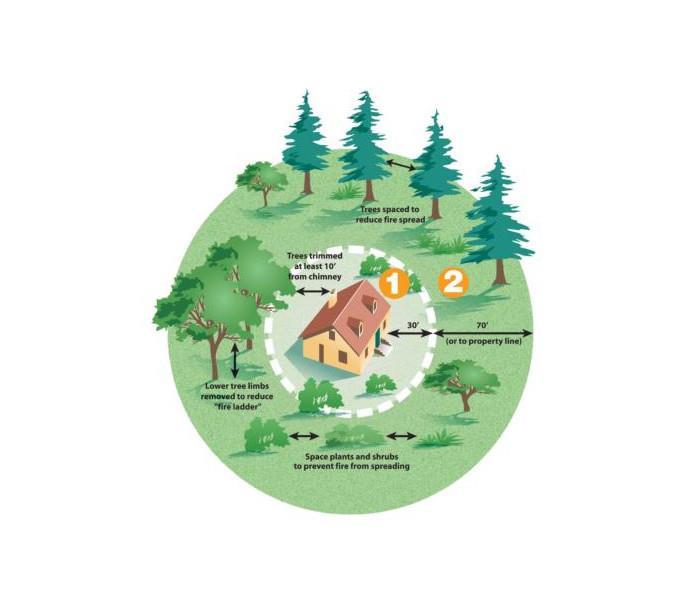 Fire Prevention Safety
Fire Prevention Safety
Here are some things you can do to ‘harden’ your home and commercial building and make it more fire resistant.
Fire season is upon us again and we wanted to jump in and do our part to help ready our
online community with some helpful pointers. That way, you can be rest assured in knowing that you’re ‘as prepared as possible’ to
weather the next wildfire that breaks out.
As a Fire & Water Restoration Company who works in people’s homes and office’s following wildfire damage, we hear all the time,
“If I had only been prepared…” or “I never would have thought this would happen to me.” We wanted to pass along some practical
preventive tips we picked up from The National Interagency Fire Center, a frontrunner in wildfire preparation.
http://www.nifc.gov/prevEdu/prevEdu_main.html
1) Use Fire Resistant Building Material - "The Best Thing That You Can Do"
The roof and exterior structure of your dwelling should be constructed of non-combustible or fire resistant materials such as fire resistant roofing materials, tile, slate, sheet iron, aluminum, brick, or stone. Wood siding, cedar shakes, exterior wood paneling, and other highly combustible
materials should be treated with fire retardant chemicals.
2) Maintain a Survivable Space - "Things You Can Do Today"
- Clean roof surfaces and gutters of pine needles, leaves, branches, etc., regularly to avoid accumulation of flammable materials.
- Remove portions of any tree extending within 10 feet of the flue opening of any stove or chimney.
- Maintain a screen constructed of non-flammable material over the flue opening of every chimney or stovepipe. Mesh openings of the screen should not exceed 1/2 inch.
- Landscape vegetation should be spaced so that fire cannot be carried to the structure or surrounding vegetation.
- Remove branches from trees to height of 15 feet.
- A fuel break should be maintained around all structures.
- Dispose of stove or fireplace ashes and charcoal briquettes only after soaking them in a metal pail of water.
- Store gasoline in an approved safety can away from occupied buildings.
- Propane tanks should be far enough away from buildings for valves to be shut off in case of fire. Keep area clear of flammable vegetation.
- All combustibles such as firewood, picnic tables, boats, etc. should be kept away from structures.
- Garden hose should be connected to outlet.
- Addressing should be indicated at all intersections and on structures.
- All roads and driveways should be at least 16 feet in width.
- Have fire tools handy such as: ladder long enough to reach the roof, shovel, rake and bucket for water.
- Each home should have at least two different entrance and exit routes.
To learn more on the topic of Fire Preparedness and Prevention in California, visit the Cal Fire’s website for further resources –
http://www.readyforwildfire.org/Hardening-Your-Home/
Titan
10/2/2023 (Permalink)
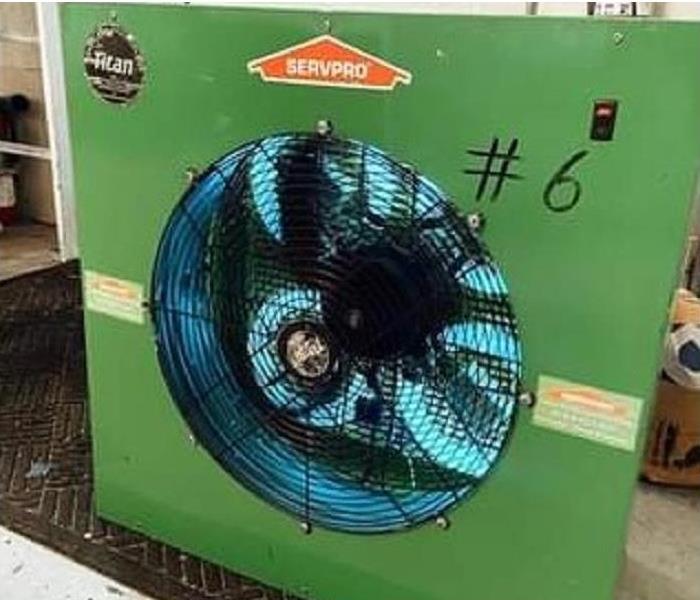 Hydroxyl Generator/Titan
Hydroxyl Generator/Titan
The Hydroxyl Generator (or more commonly known as ‘Titan’) is one of the most scientifically-advanced pieces of equipment we use to combat odors due to bio hazard, fire or water damage events.
The main benefit of using a true hydroxyl generator is that they are safe to use in occupied areas for deodorization purposes. For any businesses, they love this machine because it means less out of pocket expenses and henceforth, less business disruption!
These generators have been successfully tested on any restoration features that SERVPRO® specializes in including protein fires, floods, dead body situations, skunk odors, pet urine odors, musty odors and many types of odors. An important note: the Titan is NOT intended for mold use.
Here’s a rundown of some additional facts in order to give you the inside scoop, should you ever need to reach out to us for smoke/soot deodorization needs:
When to Use:
- When odors, gases and organic pollutants are needed to be remediated
Applications:
- Use on fire and flood damage restoration jobs
- Use to destroy odors from cigarette smoke, dead body, urine, garbage, airborne VOCs and more
Tips:
- Always remove the source of the odor before operation
- For optimum performance, a 60%+ humidity level is best. If needed, place a bucket of water or a wet towel behind the machine to allow more moisture to be pulled into the air stream.
- Use air movers to circulate the air for thorough air cleaning.
- Although purifying an area depends on many variables, a general time guide for purifying a 1,000 cubic foot area with light to moderator odor is 1 to 3 hours.
As always feel free to reach out to SERVPRO of Burbank at anytime for more information on pieces of restoration hardware. We have helpful staff willing to explain further any of our services – (818) 842-1400.
Water Damage Hazard
10/2/2023 (Permalink)
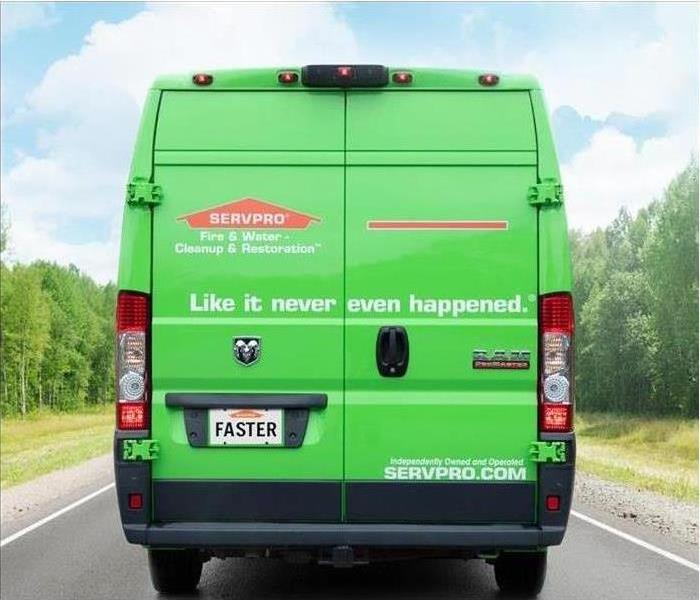 SERVPRO Vehicle
SERVPRO Vehicle
Hey SERVPRO® of Burbank readers! We’ve been getting a lot of calls about water damages lately. We here at SERVPRO know that there can a lot of questions that come along with discovering a water damage in your home, especially when it comes to your health and potential health hazards when a loss is discovered. Our friends over at SERVPRO of Saginaw put together some great thoughts on the topic. Read on to gain insight on what hazards can occur as a result of a water damage and why it’s best to let the professionals handle the clean up.
The obvious result of water damage is structural---whether severe or cosmetic. And unfortunately, structural damage can wind up costing you thousands of dollars in repairs. The result of water damage can also cause the growth of toxic mold and mildew. If left untreated, this mold proliferation can be cause health effects. So let’s get to it.
Hazard #1: Mold Growth -
According to the Environmental Protection Agency (EPA), you should have your property dried and cleaned within 24-48 hours after the initial water onslaught. This practice will help decrease the likelihood of mold growth. Although you may be capable of starting the drying and cleaning processes, it is important to know that mold can grow in areas of the home that you can't see. Thus, simply cleaning and drying your carpet will not always be effective in preventing mold growth, especially if there is a large quantity of unwanted water. The mold can still grow in different areas of your home, including the carpet padding, underneath wallpaper, behind the drywall, along ceilings and baseboards, in voids and furniture.
As noted by the EPA, there are several health hazards that can result from exposure to mold. It is also important to note that the mold clean up process, performed by you, can lead to exposure to fungi. For this reason, professional water damage restoration technicians from SERVPRO will wear special protective gear and utilize state-of-the-art equipment for mold cleanup and the prevention of mold dispersion throughout your Saginaw home.
Hazard #2: Exposure to Sewage -
Exposure to raw sewage is dangerous because it contains parasites, viruses, and bacteria such as E. coli. The sewage can also contain pharmaceuticals, chemicals, and pesticides. The EPA has stated that contaminated water can lead to the contraction of illnesses such as tuberculosis, dysentery, hepatitis, tetanus, and cholera. Safely stay away from the hazard of sewage water--blackwater--and let the experts execute the cleanup and dry out.
So… Let The Professionals at SERVPRO of Burbank Assist You!
We are passionate about helping our customers make their water damage loss “Like it never even happened.” So no matter if it’s a leaky pipe underneath your bathroom sink or a busted water main that’s flooded your entire property, our team will get you taken care of so you can get back to a safe and HEALTHY state.
SERVPRO Standards and the IICRC
9/21/2023 (Permalink)
Here at SERVPRO of Burbank, all of our crew chiefs are certified Water Damage Restoration Technicians. Management staff are certified in Applied Structural Drying. We are a certified IICRC firm also. There is a standard for the industry and we follow it closely. We strive to be experts on the standard and SERVPRO stands out from our competition because of the amount of effort we put into training and development in field expertise.
What exactly is the IICRC?
The IICRC is the Institute of Inspection Cleaning and Restoration Certification, a non-profit organization for the cleaning and restoration industry. It's main purpose is to establish and advance globally recognized standards and certifications for the inspection, cleaning, restoration and installation industries.
When using SERVPRO of Burbank you can rest assured that we hold ourselves accountable to the IICRC standards. For more information on the IICRC visit the link below!
https://www.IICRC.org/






 24/7 Emergency Service
24/7 Emergency Service








